Influenced by the impact of the global pandemic, designers and artists all over the world create interactive art installations that make the audience experience the connection during a time of social isolation. Serving as a memorial to everyone affected by the crisis, these projects encourage us to reignite meaningful connections and stay together to resist the virus, even in the era of social distancing.

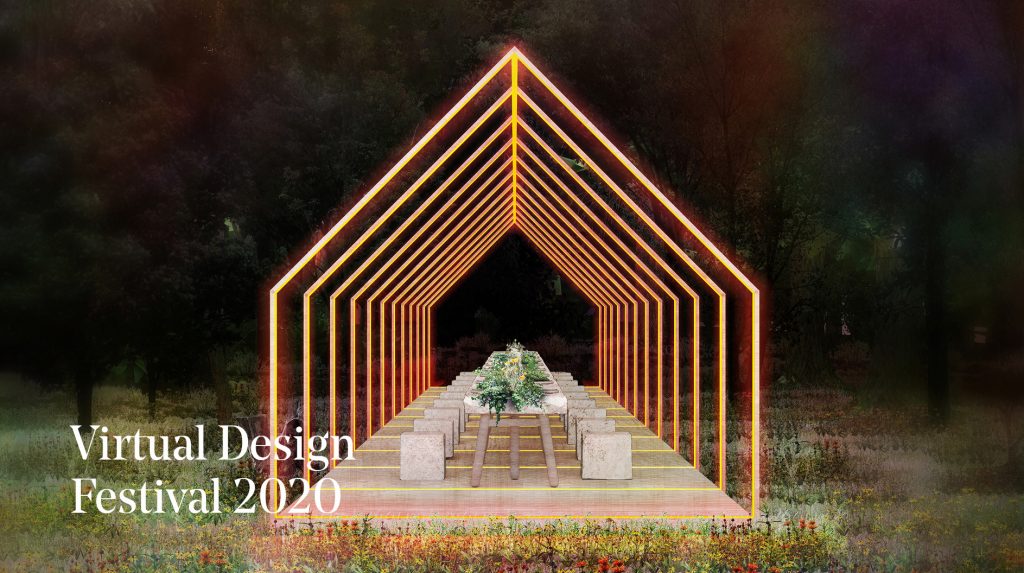
Table digital installation by Rapt Studio
When Milan Design Week in April 2020 was cancelled due to the rapid spread of Covid-19, Rapt Studio, a group of designers, architects, and strategists based in San Francisco, Los Angeles and New York, decided to recreate the initial design for their physical installation as a digital one. As part of Virtual Design Festival x Ventura Projects collaboration they exhibited a digital experience named Table, aimed to create an experience of connection during a time of social separation.
The studio invited people from literally anywhere to take a seat at a virtual table inside a virtual greenhouse, plant a virtual seed and watch it grow.
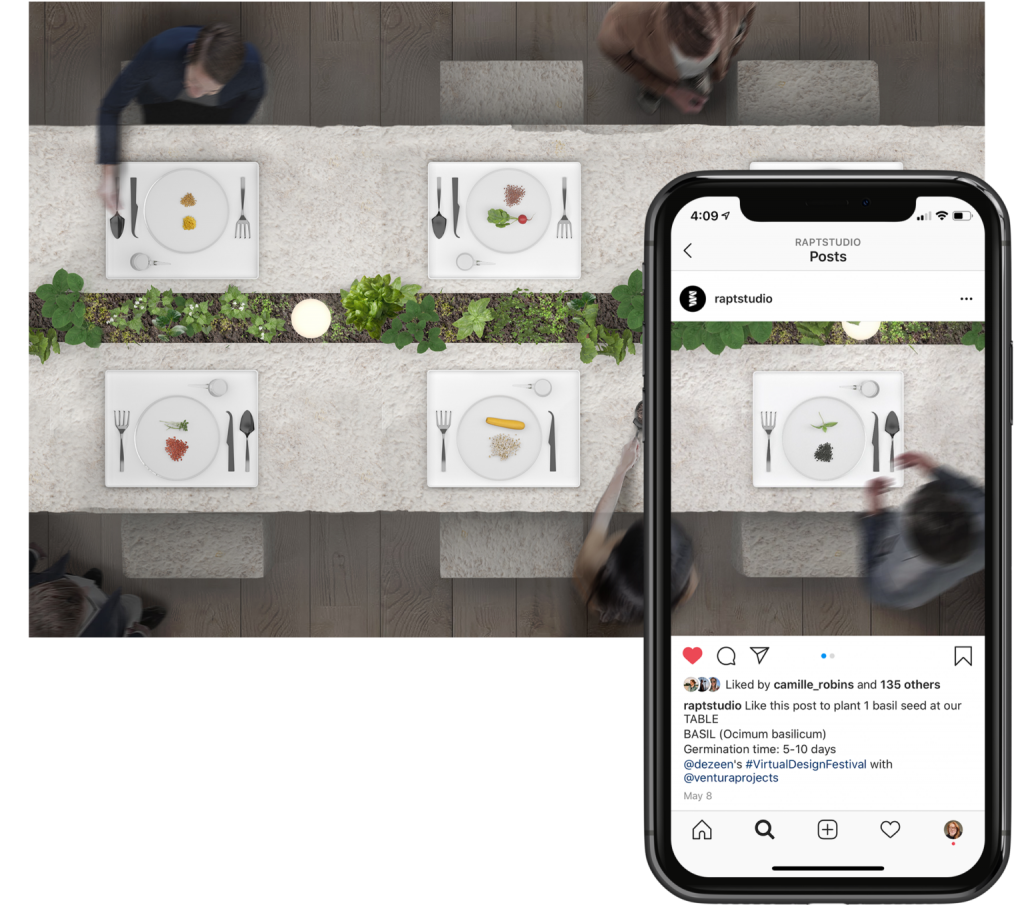

Table digital installation by Rapt Studio
The original idea was to bring together an audience to cultivate conversations at a “living table”, grown from seeds that users would plant over the course of the installation. In losing the ability to plant those seeds and have those conversations in person, the designers turned to various modern tools — including 3D animation, Instagram, Grasshopper for Rhino, and virtual reality — to reimagine the concept as a digital experience.

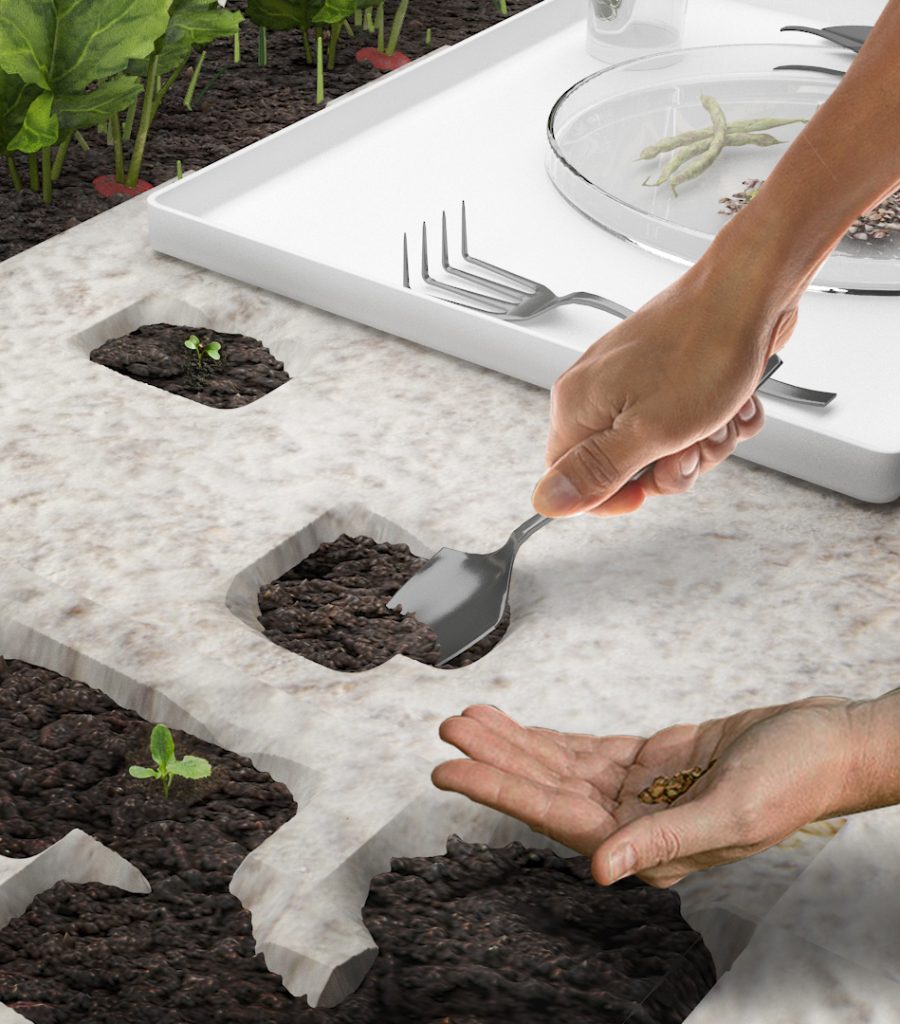
Table digital installation by Rapt Studio
Instead of seating just 12 people at a time around a real table, the studio could “seat” more than 700 guests who participated in the experiment. They were offered to select from six different species posted on social media, every “like” used to plant a corresponding virtual seed. Data was gathered and fed into a parametric model, which tracked the virtual growth and released it back onto the web as a VR model via VRChat. The participants were encouraged to make virtual conversation and connections with other people by sewing the seeds within the dining table, and observing its transformation into a “living table”.
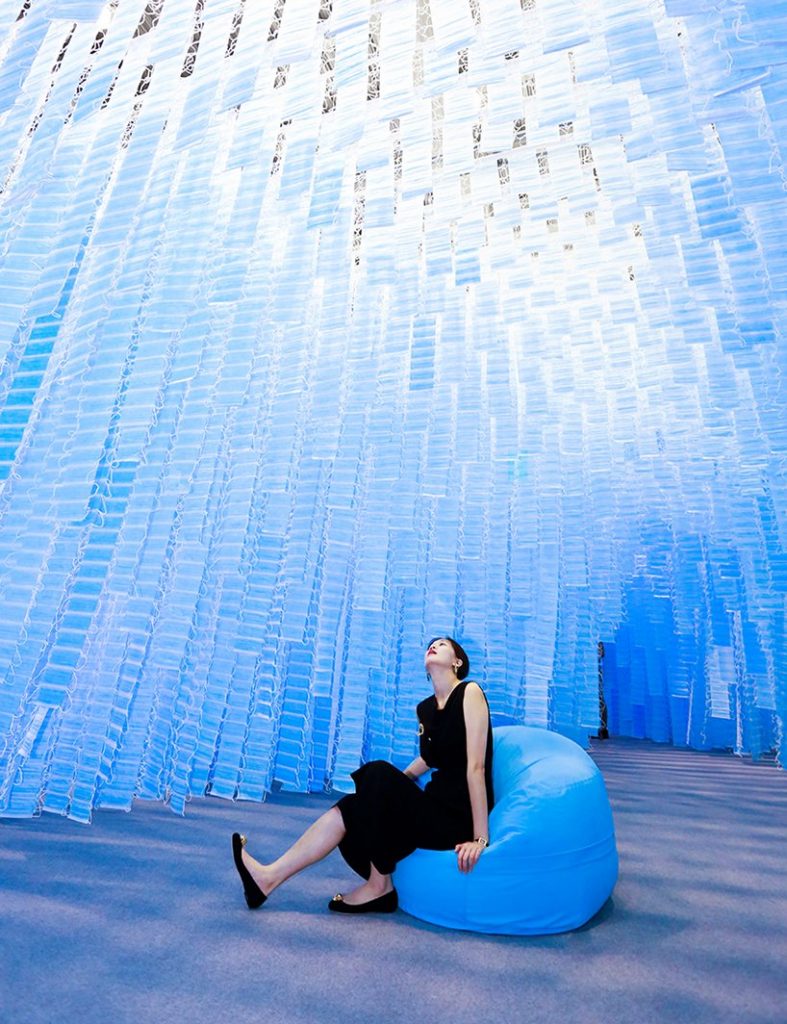
Face to Face installation by Convergent Architecture Studio (via designboom; also header image)

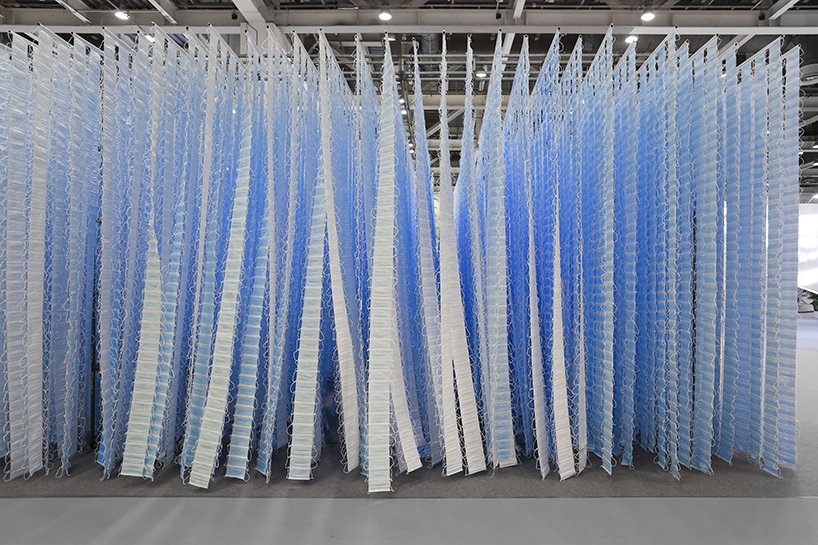
Face to Face installation by Convergent Architecture Studio (via designboom)
Named Face to Face, the project is conceived as a monument to those affected by the coronavirus crisis, aiming to demonstrate that the face mask has transformed from a simple piece of fabric to a symbol of resistance against the virus. In a way, the mask now represents the importance of each individual’s effort to combat the pandemic crisis. The installation comprises a sequence of 80 curtains and a total of 117,539 individual masks utilized as a core building material.
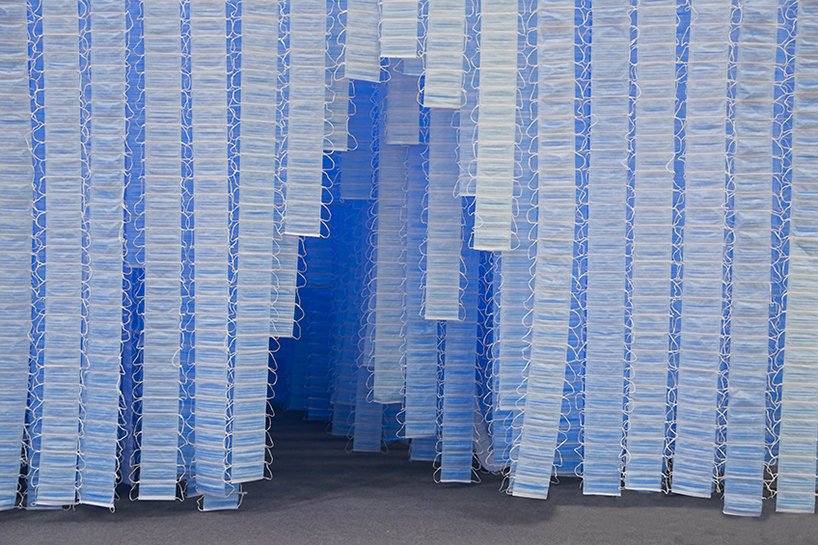
Face to Face installation by Convergent Architecture Studio (via designboom)
Each curtain profile features a section devoid of face masks which, when in sequence, creates a void area that users can walk through. The result is a cave-like volume with soft fabric walls, diffused light and muffled sound coming from the exhibition outside.
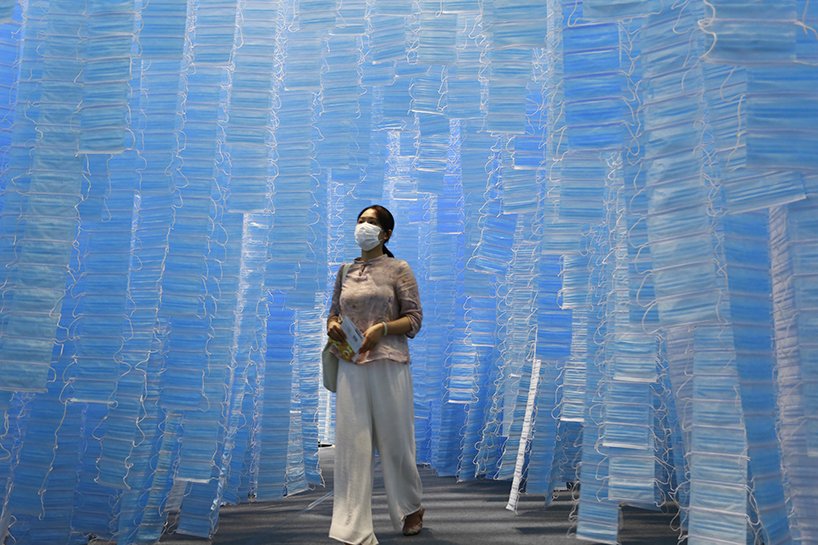
Face to Face installation by Convergent Architecture Studio (via designboom)
Detaching itself from the liveliness and noise of the surrounding expo activities, the pavilion encapsulates the very idea of social isolation, creating a profound atmosphere much like that of a chapel or memorial.
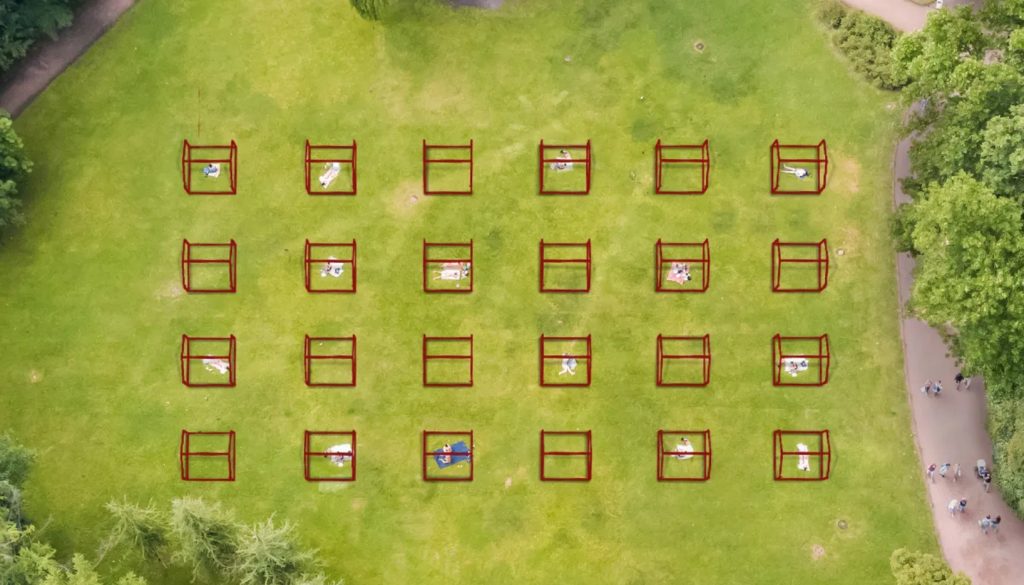
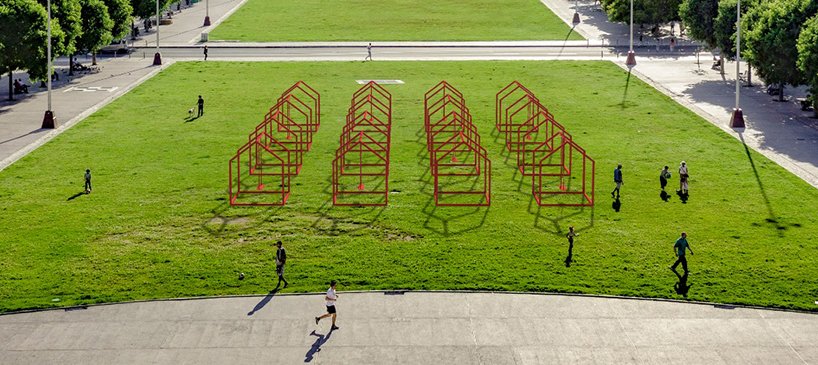
Mi Casa, Your Casa installation by Héctor Esrawe and Ignacio Cadena
Mi Casa, Your Casa is an interactive public art installation by contemporary Mexican designers-in-residence Héctor Esrawe and Ignacio Cadena that reactivates public spaces keeping social distancing. First created back in 2014 in Atlanta to establish a new relationship between the High Museum and the neighborhood, it takes on new meaning in the post-lockdown times. As we are slowly going back to the streets, we have the need to bring people safely back to public space, discover new ways of reintegration to our social life, while reigniting meaningful connections.
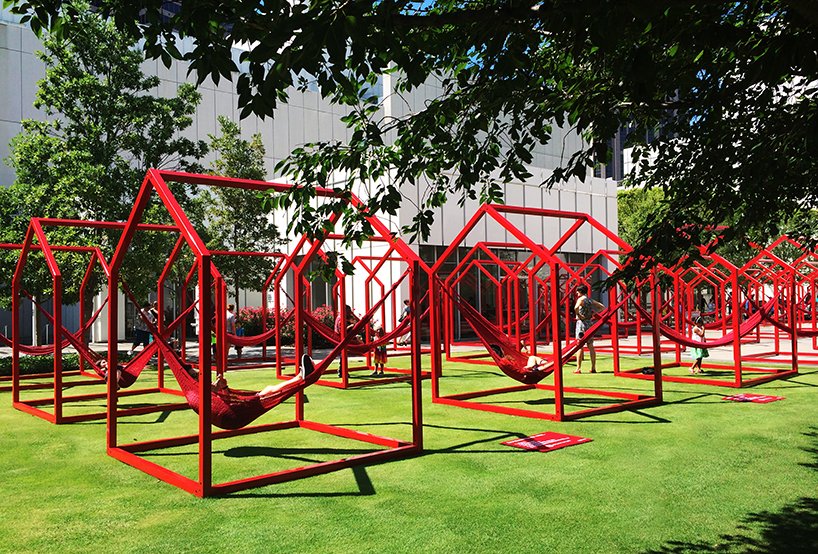
Mi Casa, Your Casa installation by Héctor Esrawe and Ignacio Cadena
The project was developed with the need to socialize at its core, and with its playful design it aims to show the value of human interaction. The basic shape of archetypal house was chosen as the one recognizable by all audiences and relating to the idea of warmth, comfort, safety and welcoming.
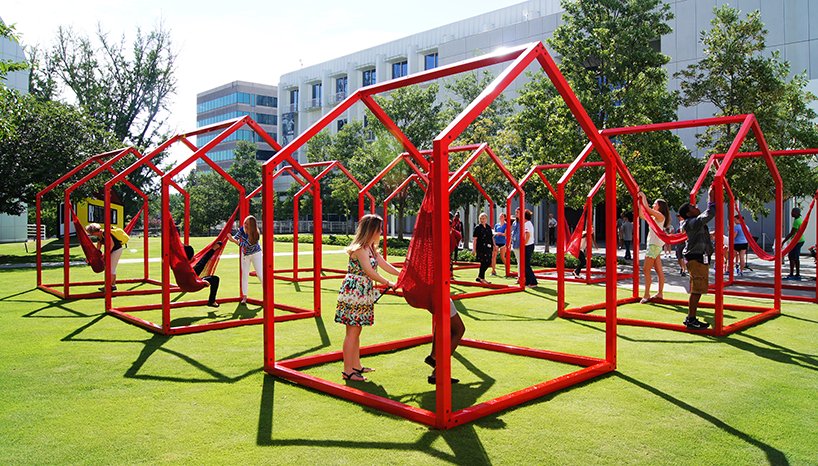

Mi Casa, Your Casa installation by Héctor Esrawe and Ignacio Cadena
The shape enables the installation to be reconfigured in the multiple scenarios and host multiple activities but considering the recommended distance. Hammocks, swings, easels, bins of chalk, and buckets of bubble water, among other elements, encouraged users to actively participate in the life of the community through recreation, social interaction, performances, and art-making activities.

Mi Casa, Your Casa installation by Héctor Esrawe and Ignacio Cadena
After Atlanta, the installation was placed in several museums, streets and public parks in different cities and countries. The series of red frames also served as a temporary refuge for families that lost their homes during the earthquake of 2017 in Mexico.